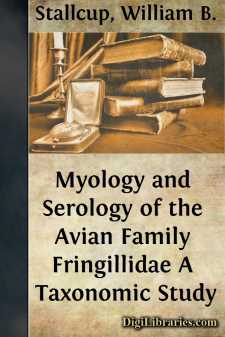Fiction
- Action & Adventure 180
- Biographical 15
- Christian 59
- Classics
- Coming of Age 5
- Contemporary Women 3
- Erotica 8
- Espionage/Intrigue 12
- Fairy Tales, Folklore & Mythology 236
- Family Life 169
- Fantasy 117
- Gay 1
- General 596
- Ghost 32
- Historical 808
- Horror 43
- Humorous 160
- Jewish 25
- Legal 4
- Medical 22
- Mystery & Detective 315
- Political 49
- Psychological 41
- Religious 64
- Romance 159
- Sagas 11
- Science Fiction 730
- Sea Stories 113
- Short Stories (single author) 537
- Sports 10
- Suspense 1
- Technological 8
- Thrillers 2
- Urban Life 31
- Visionary & Metaphysical 1
- War & Military 173
- Westerns 199
Classics Books
Sort by:
PREFACE THE writing of this foreword to the biography of the late Mr. Roger Langdon should have devolved upon one of the notable personages who had an admiration for him and his work, but unhappily they have all, or nearly all, passed away. Unquestionably the person best fitted for the task would have been the late Rev. H. Fox Strangways, rector of Silverton during the period when Mr. Langdon acted as...
more...
by:
Oskar Pfungst
A horse that solves correctly problems in multiplication and division by means of tapping. Persons of unimpeachable honor, who in the master's absence have received responses, and assure us that in the process they have not made even the slightest sign. Thousands of spectators, horse-fanciers, trick-trainers of first rank, and not one of them during the course of many months' observations are...
more...
by:
Unknown
CHAPTER I INTRODUCTORY "It seems to me that the amount of lawlessness and crime, the amount of waste and futility, the amount of war and war possibility and war danger in the world are just the measure of the present inadequacy of the world's system of collective organisations to the purpose before them. It follows from this very directly that only one thing can end war on the earth, and that...
more...
Though technic is constantly changing, methods improving, and the teaching in our schools grows better and more comprehensive, the old problems in private work are ever to be faced, and still the young sister in our nursing world needs to be counselled, guided and helped. It is for these young private duty nurses that this book has been written. For six years I went up and down one of our large cities...
more...
THE NEGRO. What is his Ethnological Status? Is he the progeny of Ham? Is he a descendant of Adam and Eve? Has he a Soul? or is he a Beast, in God's nomenclature? What is his Status as fixed by God in creation? What is his relation to the White race? The intelligent will see at once, that the question of slavery,either right or wrong, is not involved in this caption for examination: nor is that...
more...
IntroductionThe relationships of many groups of birds within the Order Passeriformes are poorly understood. Most ornithologists agree that some of the passerine families of current classifications are artificial groups. These artificial groupings are the result of early work which gave chief attention to readily adaptive external structures. The size and shape of the bill, for example, have been...
more...
AS INTRODUCTORY I wish that everybody in the world would read this book. And my reasons are not due to any desire on my part that people should join any group of social philosophers or revolutionists. I desire that the book be widely read because the general and careful reading of it would definitely add to true civilization. It is a contribution to the writings which promote civilization; for the...
more...
Volume OneâChapter One. Between the ancient and modern capitals of Russia, a fine broad road now affords an easy communication, although, but a few years ago, the traveller who would journey from one city to the other, was compelled to proceed at a slow pace, along a wild track, over rough stony ground, through swamps, under dark forests, and across bleak and unsheltered plains. The sun had...
more...
by:
Alexander Hewatt
[Sidenote] The form of legal governments. From that period in which the right and title to the lands of Carolina were sold, and surrendered to the King, and he assumed the immediate care and government of the province, a new aera commences in the annals of that country, which may be called the aera of its freedom, security, and happiness. The Carolineans who had long laboured under innumerable...
more...
More than one hundred years have passed away since, in 1789, the Marquis de Condorcet wrote his “Esquisse sur l’Admission des Femmes au Droit de Cité,” and yet the problem of women’s enfranchisement still awaits an equitable solution. Those of us who are old enough to remember the inauguration of the popular movement for the extension of the franchise to women (which may be dated from the day...
more...











